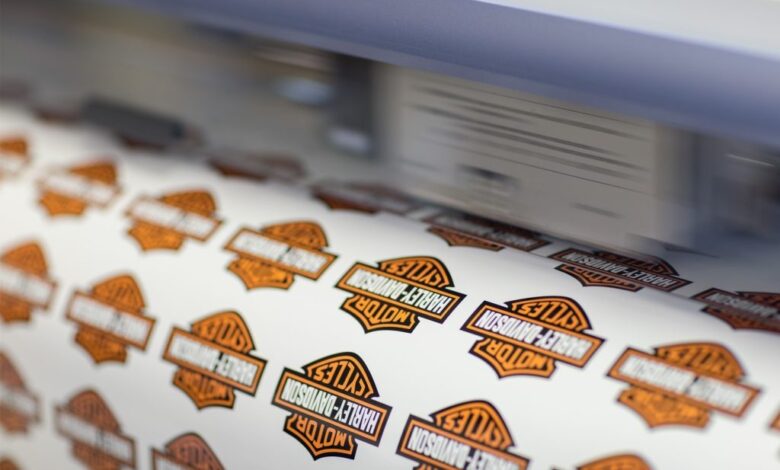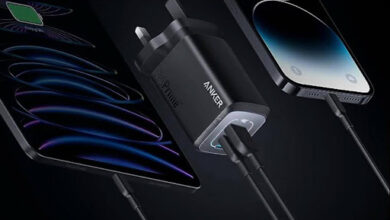Make Your Mark: Designing and Printing Perfect Vinyl Stickers

Introduction to Vinyl Stickers
Vinyl stickers have become a staple in both personal and professional branding efforts, providing a versatile medium for self-expression, marketing, and decoration. Whether you’re a small business looking to expand your reach or an artist wanting to share your creations, vinyl stickers offer a durable and visually appealing solution.
The Appeal of Vinyl Stickers
Vinyl stickers are celebrated for their durability, versatility, and vibrant appearance. Unlike paper-based stickers, vinyl options withstand outdoor conditions, making them ideal for car decals, signage, and promotional materials.
– Durability: Resistant to water, UV rays, and tearing.
– Versatility: Suitable for indoor and outdoor use across various surfaces.
– Vibrancy: Capable of capturing bright, bold colours that stand out.
Understanding Vinyl Sticker Materials
The choice of material is crucial in determining the quality and longevity of your stickers. Most vinyl stickers are produced using either cast or calendered vinyl.
Cast Vinyl
– Characteristics: Generally thinner and more durable.
– Applications: Best for curved surfaces due to its flexibility.
Calendered Vinyl
– Characteristics: Slightly thicker with a shorter lifespan.
– Applications: Ideal for flat surfaces or short-term applications.
Selecting the right type of vinyl depends largely on the sticker’s intended use and expected lifespan.
Designing Your Vinyl Sticker
Designing an effective vinyl sticker requires a balance between creativity and practicality. Here are some aspects you should consider:
Simplicity
– A clean, simple design ensures that your message is easily understood.
– Avoid overcrowding with too much text or overly complex images.
Branding Consistency
– Use consistent branding elements such as logos, colours, and fonts.
– Ensure that the sticker aligns with your overall brand identity.
Audience Consideration
– Tailor your design to appeal to your target demographic.
– Consider cultural elements or trends that may resonate with your audience.
Colour Choices and Printing Techniques
The selection of colours can significantly affect the impact of your sticker design:
Colour Psychology
– Use colours strategically to evoke specific emotions or associations.
– For example, blue can convey trustworthiness while red might invoke excitement.
Printing Techniques
Choose from various printing techniques based on colour needs:
– CMYK Printing: Ideal for full-colour designs with many shades.
– Pantone Matching System (PMS): Ensures colour consistency across different print batches.
Preparing Your Design for Printing
Proper preparation of the design file is essential to achieve high-quality prints:
Resolution
– Ensure a minimum resolution of 300 DPI (dots per inch) for crisp images.
File Formats
– Use vector formats like AI or EPS for scalability without loss of quality.
Bleed Areas
– Include bleed areas in your design file to prevent white edges after cutting.
Choosing the Right Printer for Vinyl Stickers
Selecting the appropriate printer can make a significant difference in the final product’s quality:
Inkjet Printers
– Suitable for high-quality photo-realistic stickers.
Laser Printers
– Faster print times but may lack in colour depth compared to inkjet options.
Consider using professional printing services like HelloPrint if high-volume production is needed.
Cutting Techniques for Vinyl Stickers
Precise cutting enhances the appearance and application ease:
Die-Cutting
– Offers custom shapes tailored to your design.
Kiss-Cutting
– Allows easy removal from backing without affecting the sticker shape.
Investing in quality cutting tools or services ensures professional finishes.
Application and Adhesion Tips
Proper application techniques enhance adhesion and longevity:
Surface Preparation
– Clean surfaces thoroughly before application to remove dirt or oils.
Application Techniques
– Use a squeegee or credit card to smooth out air bubbles during application.
For large stickers, consider enlisting help to ensure alignment and avoid creases.
Protecting and Preserving Your Stickers
Preserving the vibrancy of your vinyl stickers extends their lifespan:
UV Protection
– Apply laminate or UV-resistant coating to protect against sun damage.
Cleaning Tips
– Clean gently with mild soap and water; avoid abrasive cleaners that could scratch the surface.
Common Mistakes to Avoid
Avoid these pitfalls when designing and printing vinyl stickers:
Overcomplicated Designs
– Complex designs can become muddled when reduced in size.
Ignoring Bleeds
– Failing to include bleed areas can result in unintentional borders post-cutting.
Being mindful of these common errors can save time and resources while improving final outcomes.
Industry Insights and Trends
The vinyl sticker industry is continually evolving with new trends emerging regularly:
Eco-Friendly Options
As sustainability becomes increasingly important, there’s a growing demand for eco-friendly materials like biodegradable adhesives or recycled vinyl options.
Interactive Elements
Incorporating QR codes or AR elements into designs adds an interactive dimension that can engage tech-savvy audiences effectively.
Keeping abreast of industry advancements enables creators to innovate within their offerings successfully.
Case Study: Successful Sticker Campaigns
Examining successful campaigns provides valuable insights into effective strategies:
One notable example includes how an indie band leveraged limited edition holographic stickers as part of their merch strategy — enhancing fan engagement while serving as unique memorabilia pieces post-concerts!
Another inspiring case involves small businesses utilizing branded bumper-stickers distributed at local events — generating free advertising as they spread across community vehicles over time!
Understanding diverse applications allows businesses/artists alike harness this versatile medium creatively toward achieving varied objectives successfully!





